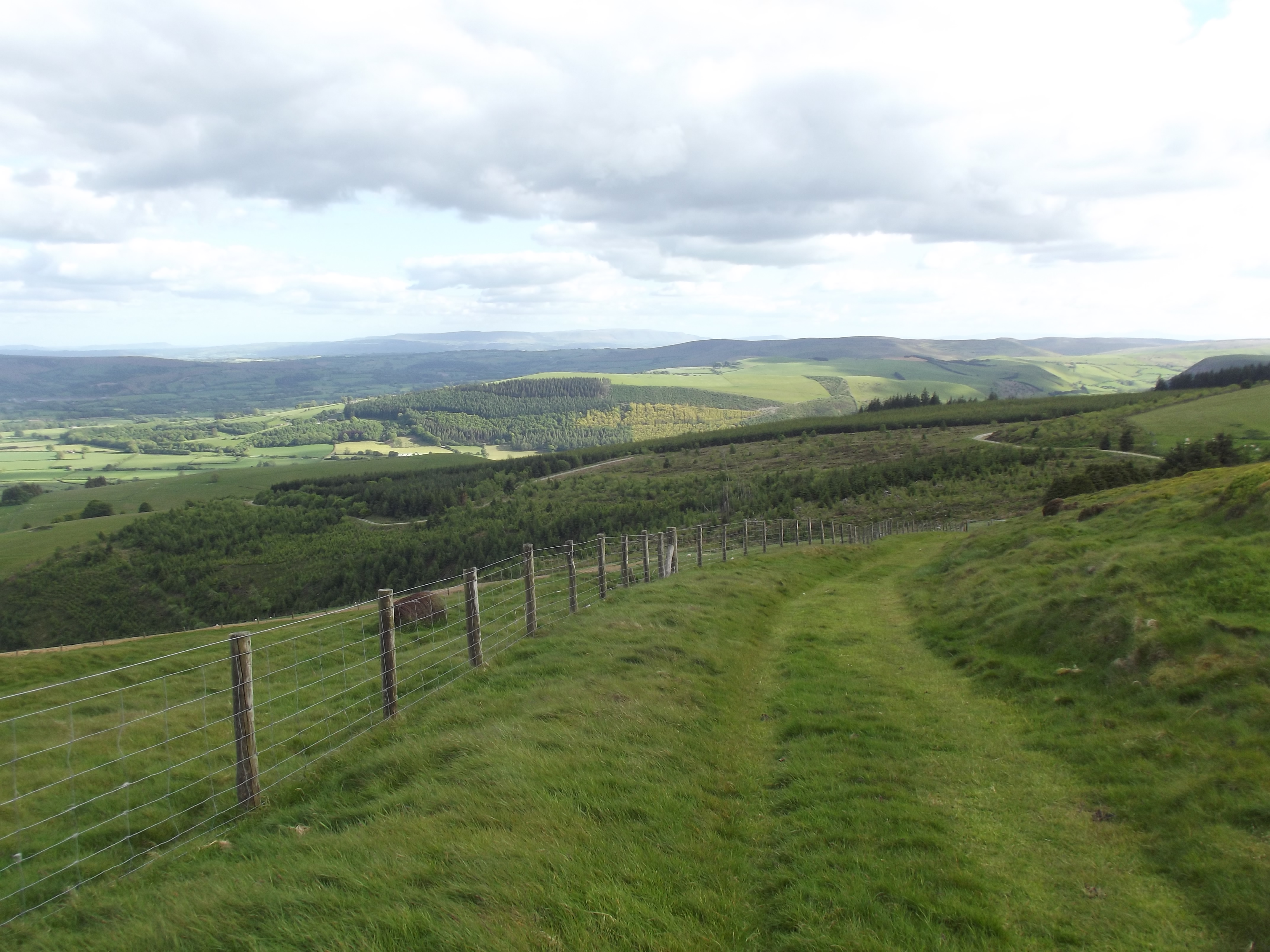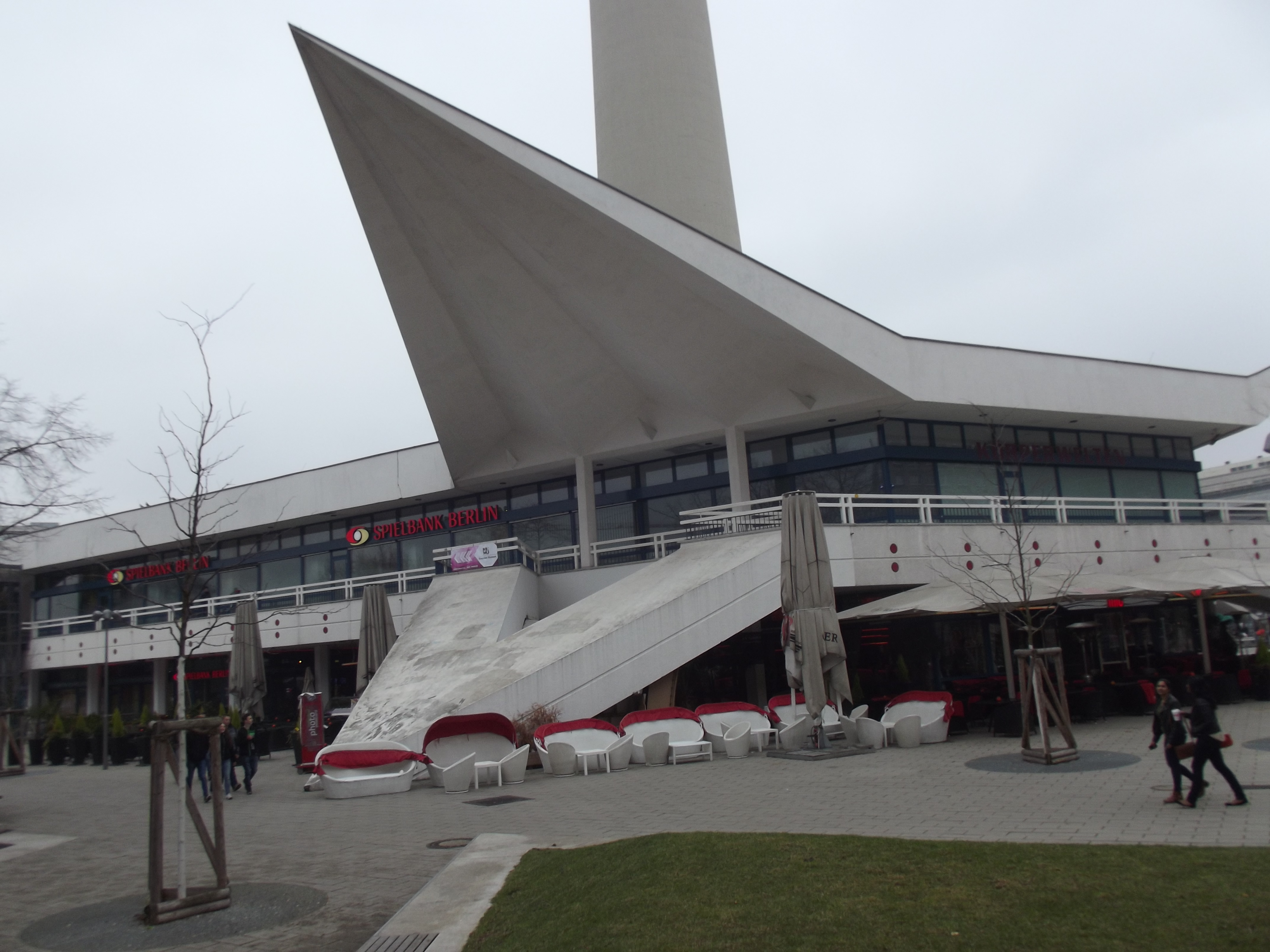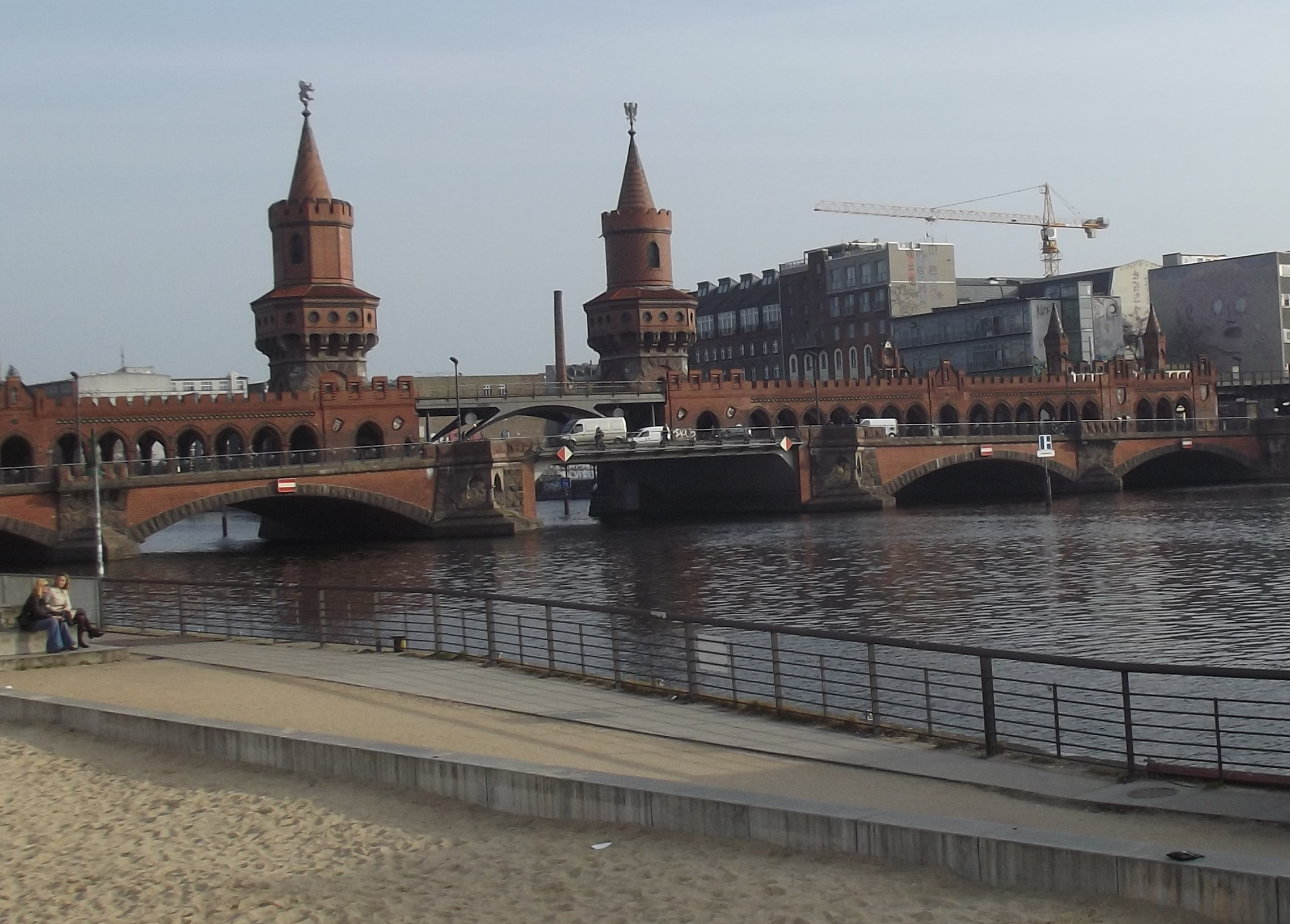Faced with the prospect of a sunny weekend, perhaps the last one of this year’s poor summer, and no particular place to go, I racked my brain for some outdoor pursuits so I didn’t stay in all day and feel guilty for wasting the nice weather. The seaside would be nice but can’t go too far, saving my pennies. Bournemouth? Nah that’ll be heaving. In the end, a look at my trusty OS Explorer Map brought about the idea of filling some gaps in my conquering the Solent Way along the east coast of Southampton Water. Every August, when I take the ferry from Southampton to Cowes, I notice the unusual golden-coloured cliffs between Warsash and Hill Head. I was very familiar with most of that area but the Warsash to Hill Head section was completely unexplored.
So, I took the no 4 bus from Southampton to Warsash, noticing on the way the free Wi-Fi on board (which I discovered by accident in attempting to get my laptop to connect via my mobile) and, more significantly, that the Crow’s Nest pub has been demolished. This was a large suburban pub and a landmark at the top of the hill on the main A27 through Bursledon. A place that I enjoyed many karaoke nights a few years ago. It was one of those pubs that made it into bus timetables, like the Target in Sholing was and I’m sure there were others.
Arrival in Warsash was marked by the sighting of an unusual pebbledash clock tower.
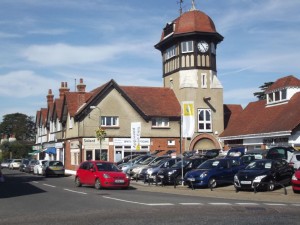
- The walk itself is fairly unremarkable at first, going across heathland and marshes, and is marked by a lot of massive houses and a large Brutalist building of some kind, I presume it is part of the sailing college that’s in Warsash. Most of the views are dominated by Fawley Refinery and Calshot Power Station; the latter in particular seems to muscle in on nearly every photo. The walk was surprisingly quiet, apart from people walking their dogs and their children, and eager twitchers.
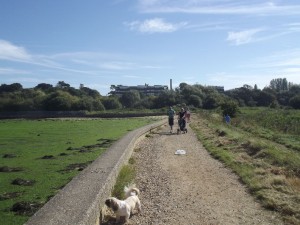
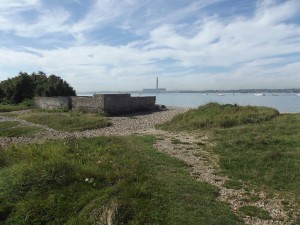
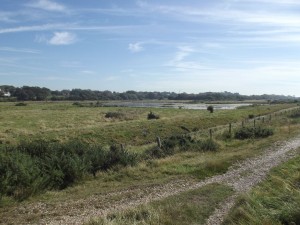
- A bit further on those elusive cliffs appear and I was surprised to find cliffs like that in the otherwise-very-flat surrounding area. They are golden in colour rather than chalk or granite, most unusual. The best thing of all was that there was not another soul as far as the eye could see. There is no way down from the top of the cliffs for most of their length and it felt like being somewhere very remote; an oasis of tranquillity in the otherwise-hectic Solent conurbation.
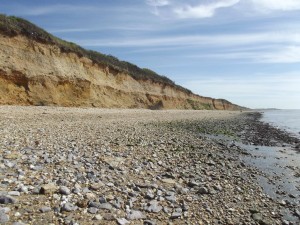
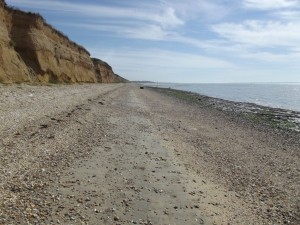
The next leg of the walk brought me into the middle of an unusual settlement that consisted entirely of small wooden single-storey chalets. Nearly all of the shacks had a wind turbine on the roof; perhaps it was a self-sufficient community? The only place it reminds me of is Dungeness, which has similar small shacks but those are spread out much more sparsely. This brought me back into the familiar territory of Titchfield Haven, which gets the twitchers very twitchy but I don’t have the patience for such pursuits. The place hasn’t changed a bit. The small marina round the corner was inhabited by a load of Mallard ducks making laughing noises, perhaps jealous of all the attention the twitchers are paying to other birds.
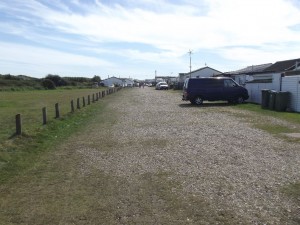

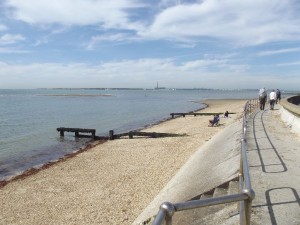
It was over four miles and not a drop of fluid had passed my lips so I went into the Osbourne View, a massive gastro-pub with an enormous garden adjacent to the beach – nice. A cold pint of Stowford Press went down like a treat, although I was very tempted by the Tanglefoot and Fursty Ferret ales (I used to drink those a lot in Isobar last year). Adjacent to the pub was a very modern new house, something that Frank Lloyd-Wright and Le Corbusier would have been proud of. It goes without saying that you’d have to be seriously rich to live on top of the cliffs with those views.
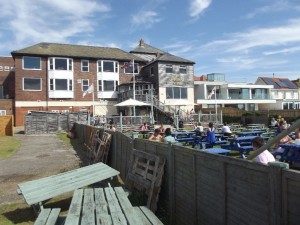
Put off by the pub prices for food (£2.95 for a bowl of chips?!), I continued onwards, past a long row of beach huts (and it was fascinating to see how each hut occupant had personalised their small space) and came across a seaside caf like I was hoping to find. Sausage and chips for £1.50, that’s more like it! ‘The Shack’, at the northern extent of the Marine Parade road is the name of the place. Highly recommended.
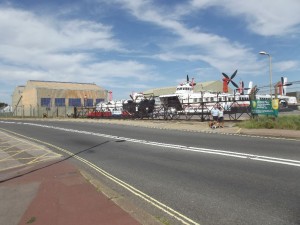
I continued along the seafront at Lee-on-the-Solent, past giant aircraft hangars and giant mothballed hovercrafts, past the playground where the lido used to be and to the main seafront (next to the amusements where the station used to be). Lee-on-the-Solent and Art Deco architecture have some interesting links. There used to be a wonderful Art Deco lido but every trace of it to the smallest detail was destroyed to make way for a kids’ playground. There used to be an Art Deco tower next to the station as well, and that was also destroyed. I’ve always loved the Art Deco shops (in the parade where the famous Bluebird Café is) and fortunately, they are still there.
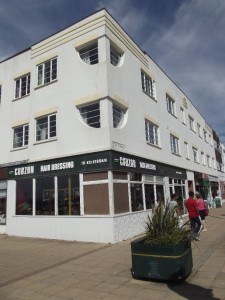
It became apparent that Lee-on-the-Solent is very bereft of any pubs in that main shopping area and on the seafront. The only one I know of is the Old Ship. I went in here for another drink, and noted that the food prices were more reasonable here although I had already eaten. There didn’t appear to be a gents’ toilet anywhere; they must have hidden it well. There’s no shortage of public WCs along the coast path though, although some of them are probably of a dubious nature.
After Lee-on-Solent, the landscape changes dramatically, and gives way to gravelly heathland, part of the MOD training camp at Browndown. The MOD seems to own half of the Gosport peninsula but this part is open for the public to walk through. The only signs of its military use are the badly-broken remains of concrete walls about 2 metres thick and a large concrete mushroom (which on further inspection was some kind of ventilation shaft).
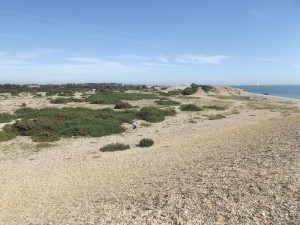
Onwards to Stokes Bay, familiar territory again and the beach here was fairly popular; not surprising given the weather and making the most of it. After Stokes Bay was Gilkicker Point and rounding this felt like I was onto the home straight. Not far to go now…that was until the coast path came to a very abrubt stop, with a fence topped with rolls of barbed wire going far out into the sea, and no indication of where the path went. I couldn’t be bothered to get the map out of my rucksack so I thought I’d follow the perimeter of the fence until I got back to the sea. This meant going across a golf course and then back onto a very suburban road. This eventually led to the car park I remember next to the prison. I thought the aforementioned fence surrounded the prison but my map says it is ‘Fort Monckton’, the prison being the other side of the car park.
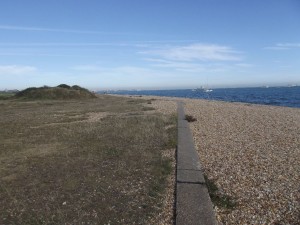
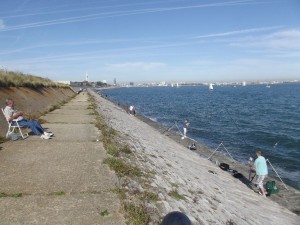
I continued along the coast path from the prison (now known as an ‘Immigrant Removal Centre’) and passed the large Haslar hospital; not sure whether this has closed yet or not; I know there were plans to close it. It’s very big and very Victorian. After this, the path once again came to an abrubt halt, this time with padlocked gates adorned with razor wire. I had to retrace my steps and eventually found the road between the Haslar hospital on one side and whatever the top-secret Qinetiq site is on the other. I’ve been to Gosport many times but I don’t think I have ever been to that part of it. A sort walk over Haslar Bridge and past those tower blocks with the fab 60s mosaic murals on brought me to Gosport bus station, very weary!
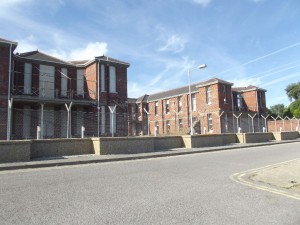
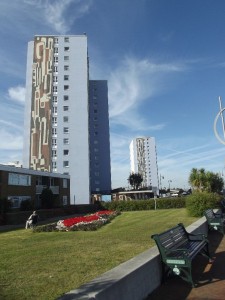
Last updated on Saturday 8 September 2012 by GaryReggae
